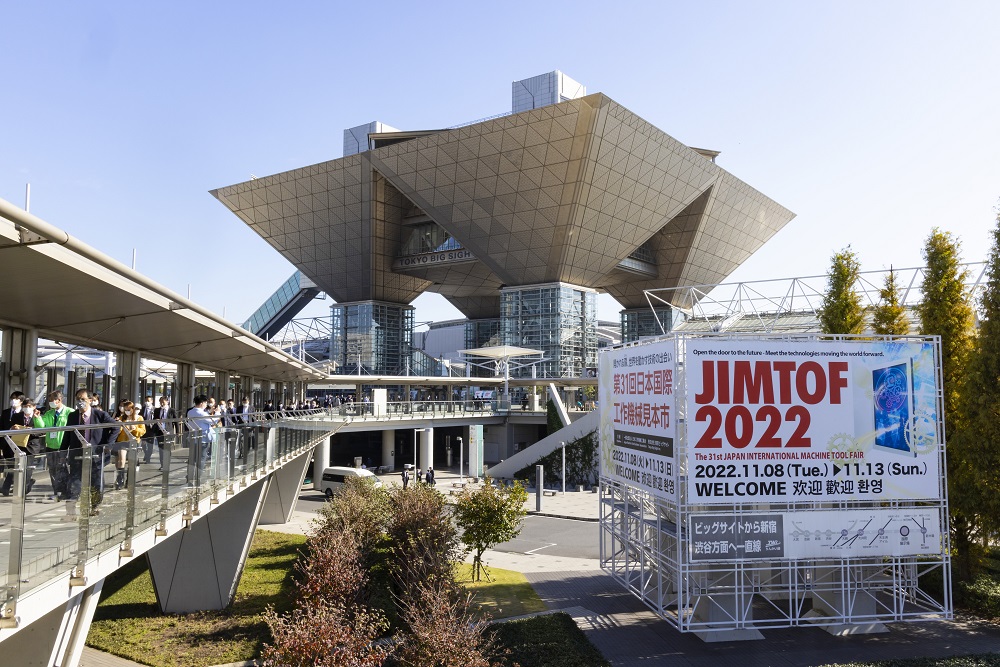
- News
- Basics
- Products
- JP Job shop
- Exhibition
- Interview
- Statistic
- PR
- Download
- Special contents
News
January 17, 2023

The global economy is facing unprecedented uncertainty due to the ongoing COVID-19 pandemic, the unresolved Russia’s invasion of Ukraine, and rising interest rates holding inflation in many countries. Despite these challenges, orders for Japanese machine tools remained strong in 2022 and the 31st Japan International Machine Tool Fair (JIMTOF2022) took place in November. Capital investment intentions also appear to be positive. Despite the difficult economic forecast, there is still strong demand for machine tools. It is a curious start to the year, but what will happen this year?
As is the case every year, the “year in which the economy is unreadable” has begun. Although the year 2022 was also uncertain, orders for machine tools and other factory automation products were booming. According to the Japan Machine Tool Builders’ Association (JMTBA), orders reached 1.619 trillion yen by November and are expected to reach the annual forecast of 1.75 trillion yen, which was revised upward in September. At the same time, however, orders received in November showed a downtrend, falling for two consecutive months both month-on-month and year-on-year. Although the long pace of recovery has plateaued with the lowest amount of order recorded this year, it remains strong at around 140 billion yen.
However, the current global economic situation is complex and uncertain. The ongoing impact of COVID-19 pandemic, and Russia’s invasion of Ukraine continue to create significant geopolitical risk, with no solution in sight. The interest rates are rise in many countries to hold inflation. Focusing on the manufacturing sector, there are numerous uncertain and unstable factors at play, such as disruptions to supply chains and shortages of components. There is also the “Zero Corona” policy of China, a world important market, with lockdowns.
Under these challenging conditions, in November 2022, JIMTOF 2022 was held in Japan as an in-person event for the first time in four years. Despite a sharp decline in the number of visitors from China and other foreign countries, the event attracted more than 110,000 visitors and had a lively atmosphere. The main trends at JIMTOF 2022 were “automation” and “digitalization”, which can be seen as a continuation of conventional industry trends and a natural evolution of the industry.
Another trend that has been gaining significant attention in recent years is “environmental responsiveness”. At the JIMTOF2022, numerous technologies for reducing the environmental impact were on display, including “decarbonization” and “carbon-neutral” initiatives to achieve zero emissions of carbon dioxide, a major greenhouse gas. Proposals for electric vehicles (EVs) were also noteworthy. These trends in automation, digitalization, and environmental responsiveness are expected to drive strong demand and remain relatively resilient to economic fluctuations.
 The 19th International Machine Tool Engineers’ Conference (IMEC2022) was held during JIMTOF2022 with the theme “Challenge for the new era – Monozukuri revolution by digital technology”. The conference focused on topics such as green transformation (GX), digital transformation (DX), additive manufacturing (AM) and other related areas. Keynote speaker, Professor Michael Zwicky Hauschild (=photo) of the Technical University of Denmark, an authority on environmental issues, presented on sustainable manufacturing.
The 19th International Machine Tool Engineers’ Conference (IMEC2022) was held during JIMTOF2022 with the theme “Challenge for the new era – Monozukuri revolution by digital technology”. The conference focused on topics such as green transformation (GX), digital transformation (DX), additive manufacturing (AM) and other related areas. Keynote speaker, Professor Michael Zwicky Hauschild (=photo) of the Technical University of Denmark, an authority on environmental issues, presented on sustainable manufacturing.
Needless to say, environmental responsiveness and manufacturing don’t always go hand in hand and are often looked away from. In the future, however, the perspective of environmental responsiveness is likely to become a larger trend that will define trends in the manufacturing industry and the direction of FA product development. The world is beginning to recognize that environmental issues need to be addressed. This perspective offers opportunities for competitiveness, additional value, differentiation, and profits that have never been seen before, and it cannot be seen just as a temporary trend.
There are also challenges facing the manufacturing industry such as parts shortages which can lead to production disruptions. Closing the supply-demand gap is a major management issue for FA manufacturers, at least during this fiscal year and possibly next fiscal year and beyond.
SEISANZAI Japan’s editorial team reads what will happen in the factory automation industry in 2023, based on the trends of exhibitors at JIMTOF2022, as “This Year for This Type of Machine”. The responses to the major trends, which are not influenced by the different models, and the strategies based on the characteristics and trends of each model are evident.
The ongoing global instability and increasing uncertainty in the economy have led to a complex outlook for the factory automation industry in 2023. The demand for factory automation products appears to have peaked out, yet the demand still seems to be holding steady. This may be a mysterious start to the year. While there is a need for a variety of assessments and evaluations, there are not many situations so interesting as this one if we are open-minded about it. Anyway, the New Year has begun, which is more difficult to forecast than usual. The question for FA companies is not only what will happen this year, but also how to handle things, taking advantage of the post-JIMTOF timing.
January 10, 2023
December 7, 2022
September 24, 2025
August 22, 2025